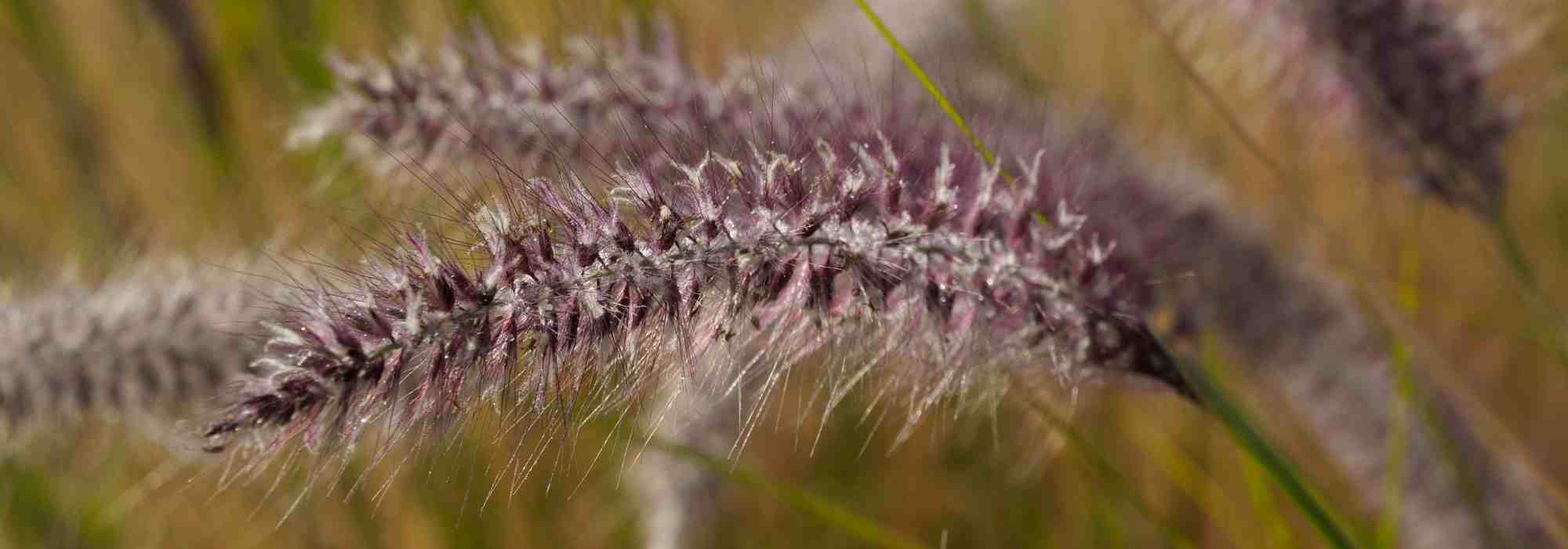
6 grasses for pots
Selection of grasses suitable to grow in pots
Summary
Potted ornamental grasses are unmatched at bringing lightness, dynamism, volume and softness to a balcony or a terrace. Pots or troughs are also perfect for showcasing trailing forms. Easy to grow and maintain in the garden, you may wonder how they behave once a little more confined in pots or large planters.
It is entirely possible to create a very attractive display on your balcony or in your garden with a single striking grass specimen, or a series of pots of chosen sizes, mixing grasses of different heights and colours. This makes it possible to combine grasses with different needs that you might not have been able to plant in the ground. Stipas and Miscanthus are particularly among those you can easily plant in containers, as well as grasses for dry soil that tolerate occasional lack of watering.
So, which grasses are ideal to grow in pots? Which ones do not require successive repottings? Discover our selection to help you choose among the many varieties of grasses!
Miscanthus nepalensis: a spectacular grass
For structural effect on balcony, it is interesting to play with imposing grasses with vigorous growth and impressive volume. However, avoid “giant” varieties unsuitable for most containers and for this potted setup.
Many Miscanthus are tall enough to provide volume and structure worthy of a bush. Among them, Miscanthus nepalensis, the Miscanthus of Nepal, at 1.20 m tall is ideal. It is distinguished by a superb, luminous flowering with fringed plumes of old-gold colour that become pale and downy in autumn. Its fountain habit remains only slightly spreading, with a 60 cm span, and it performs very well in a pot.
Place in a very sunny position where its inflorescences will shine. It also tolerates very light shade. Hardy down to -10 °C, it is somewhat less so in a pot, as are all cultivars presented in this selection. It requires very little pruning, and indeed retains its culms for much of the winter. It is simply spectacular solitary in a terracotta pot on the terrace!
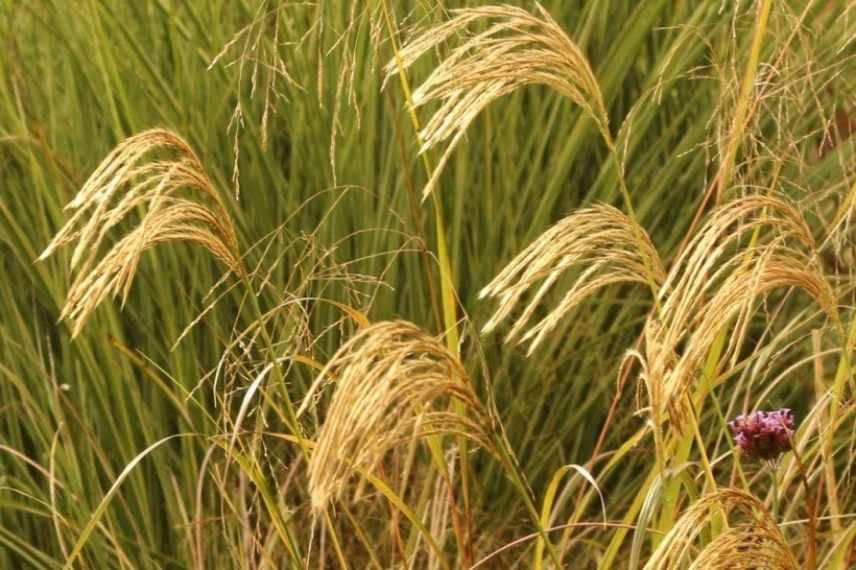
→ Also discover our complete fact sheet on Miscanthus, and our advice sheet on the best varieties of Miscanthus
You may also read
Carex: buyer's guideHakonechloa macra 'Aureola': a Japanese-inspired touch on the terrace
Hakonechloa macra or Japanese forest grass, often presented for its great ornamental qualities, is one of grasses best suited to cultivation in pots. Its cascading foliage lends itself ideally. In pot it will eventually cover whole container, forming cushion wider than tall, which will retain freshness of watering.
Linear leaves are variegated with yellow and light green. They are very trailing and produce arched clumps of incredible luminosity. Measuring about 40 cm high, Hakonechloa macra ‘Aureola’ is the perfect grass to occupy a shady corner with other perennials also grown in pots: Hostas, Ophiophogons, but also a dwarf Acer palmatum or Acer dissectum, a few Begonias envasiana grouped in an attractive pot will lend a slightly Japanese air to end of balcony or terrace. A little more sun will make foliage take an even more yellow tone with more marked variegation. In autumn, foliage will take a soft orangey hue.
It requires very little maintenance once plant established (which takes a little time, Hakonechloa macra growing slowly), aside from regular watering and pruning of dead parts at end of winter.
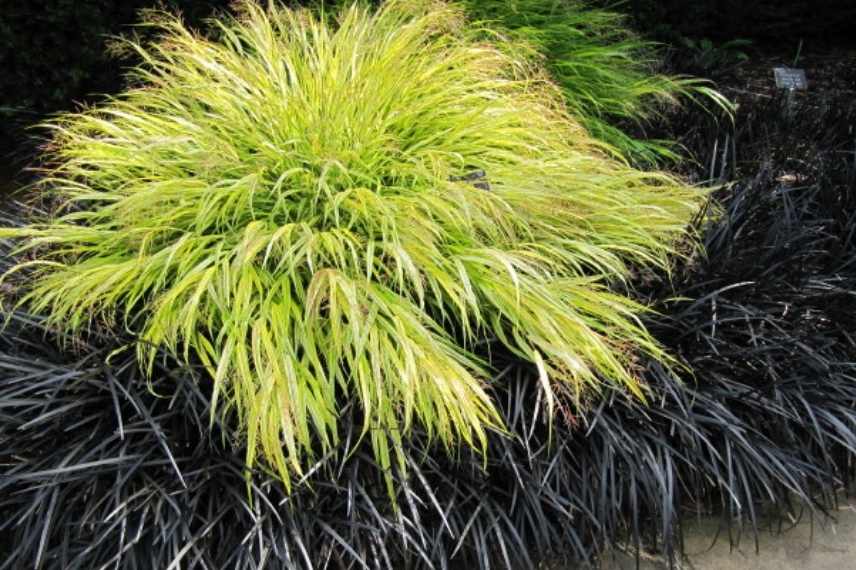
Hakonechloa macra ‘Aureola’ bordered with Ophiophogons (Photo: L. Enking)
→ Also see our full factsheet: Hakonechloa, planting, cultivation, care and Olivier’s video on cultivar ‘All Gold’ :
Discover other Ornamental grasses
View All →Available in 0 sizes
Available in 0 sizes
Available in 0 sizes
Available in 1 sizes
Available in 0 sizes
Available in 1 sizes
Available in 1 sizes
Available in 1 sizes
Available in 1 sizes
Available in 2 sizes
Pennisetum setaceum 'Rubrum': a beautiful frost-tender exotic
One advantage of container growing is, of course, being able to grow tender varieties that couldn’t be planted outdoors, as they can be moved into a greenhouse or a frost-free room for the winter.
The Pennisetum setaceum ‘Rubrum’, hardy down to 0 °C, is a magnificent exotic grass with purple foliage and spikes that deserves pride of place on a terrace. Planted in full sun, fine ribbon-like leaves are almost black. They appear slightly redder in partial shade. The inflorescences in long feathery pink spikes develop from July through early autumn, and longer in mild climates: they form a very light arching cascade among the erect leaves. They will lighten in colour as autumn progresses.
Pennisetum setaceum ‘Rubrum’ is a gem, an exceptional grass that instantly adds a tropical note to your small garden corner. Over 1 m tall when planted in a container, it commands attention as a specimen plant. If you want to pair it with other summer pots, mix it with white, pink and purple perennials and annuals for a harmonious colour scheme: Diascias, Sedums, Japanese Anemones, or a golden Cordyline to contrast the scene.
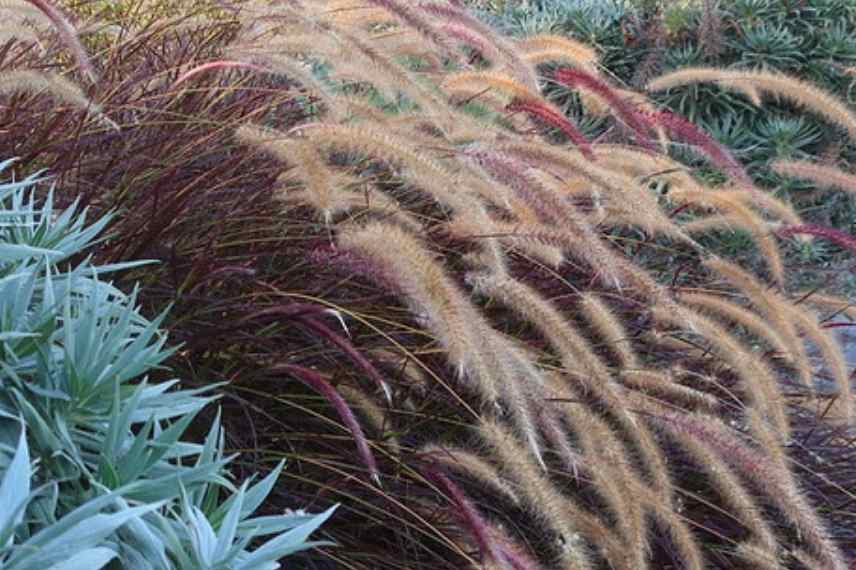
Pennisetum setaceum ‘Rubrum’ (Photo: KM)
→ Discover our full fact sheet on Pennisetums
You may also read
Grasses: which variety to choose?Stipa tenuissima: the swaying beauty
You’ve seen those beautiful, light golden grasses in urban plantings where they are very fashionable, and you’d like the same at home! Fortunately, Stipa tenuissima or Stipa tenuifolia (editor’s note: following recent changes in botanical nomenclature, this grass is now classified as Nassella tenuissima) is very pretty in a pot, and adapts very well to container life. Evergreen, it can decorate your balcony or terrace year-round with its light trailing tufts.
Position it where it can undulate in the wind, which particularly showcases its foliage and airy inflorescences, and place it in full sun to enjoy its summer flowering that will literally shine, lit by sunlight. It suits Mediterranean garden or dry garden settings very well, alongside Buenos Aires vervains, Eryngiums, rosemary, fescues, lavender, etc.
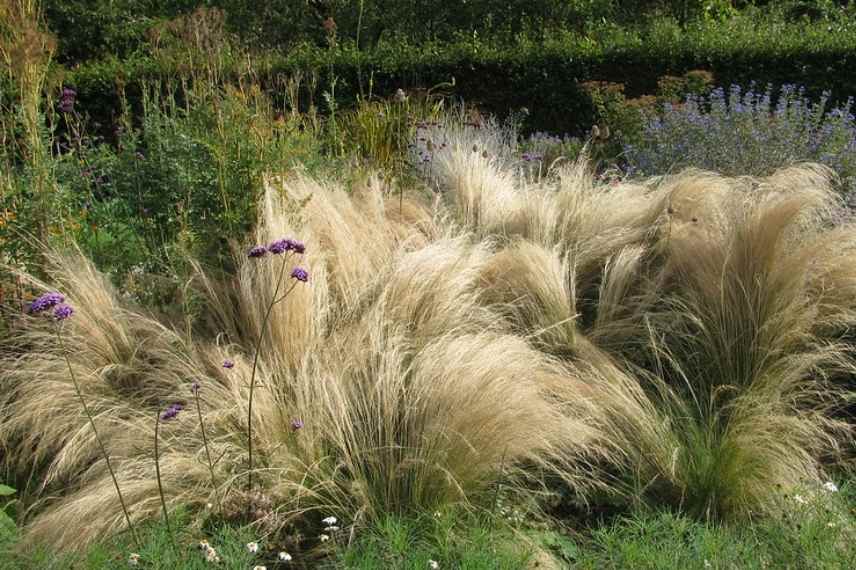
→ Discover our complete fact sheet on Stipas
Carex testacea 'Meadow Fire' sets the garden alight
Carex, or sedges, part of grasses but belonging to neighbouring family Cyperaceae, are splendid plants mostly evergreen, growing in medium- or small-sized clumps. They are ideal for growing in pots, and are particularly useful for dressing a spot that is shadier than that preferred by their Poaceae cousins.
Among the many varieties in every shade of green, I have a soft spot for Carex testacea ‘Prairie Fire’, an orange sedge with remarkable bronze‑orange foliage. Carex are of real ornamental interest for their foliage, their inflorescences often remaining discreet. In ‘Prairie Fire’, which reaches 50 cm, fine leaves form a dense, semi‑erect clump, first light green, then olive green tinged with orange as season progresses. It truly stands out for this exceptional colour that sets the garden alight in sunlit rays and irresistibly draws the eye.
It looks magnificent alongside other pots to form a mini meadow of ornamental grasses, with a Carex comans ‘Frosted Curl’, greyer and more trailing, a Carex buchananii in the same rust tones, a blue fescue, all of similar dimensions… or some boxwood clipped into spheres to contrast with its lightness.
→ Also discover our full fact sheet on Carex and our Carex buying guide
Cyperus papryrus: a mini aquatic scene
Potting grasses allows you to be daring! Creating a small aquatic garden is one such possibility with selected varieties of rushes, Phragmites or Papyrus. These grasses planted in large tubs or small basins are perfect for composing a mini-aquatic scene in your courtyard, on your terrace or balcony, and even in the garden if you don’t have boggy or very wet ground… which is not the case for everyone.
Le Cyperus papyrus, a name that transports us to Egypt, is another plant of the Cyperaceae family, which grows to over 3 m in its natural habitat. It is possible to grow it here in mild climates, submerged in pots that can be brought indoors for winter (to around 10 °C), as this handsome grass is very tender. This Nile Papyrus needs sun or light shade to produce from June its characteristic umbels with cream-coloured spikelets, then yellowing and gradually turning brown. It has a very striking habit, ultimately erect to 2 m, with triangular, ridged stems and evergreen linear foliage, very fine and trailing gracefully.
As it tends to spread via its running rootstock, growing in a large pot is ideal. It will create a very stylish, purely ornamental tropical-garden feel. Use, for example, large galvanised washtubs, perfect for this type of plant that needs plenty of space. Spectacular as a single specimen, it can accompany other tubs hosting Arums, ferns, giant Hostas, water lilies…
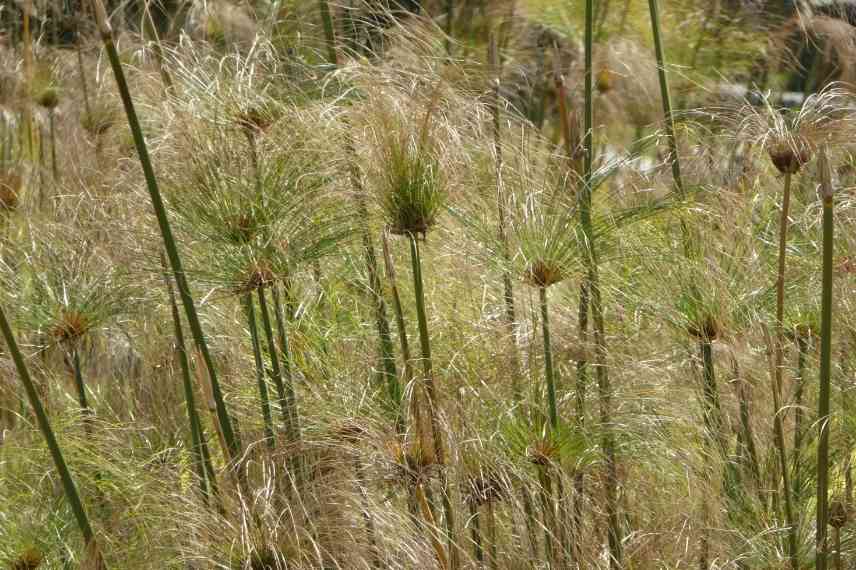
Cyperus Papyrus (Photo: Gwenaëlle David)
→ Discover also our complete factsheet on Cyperus, Papyrus and our advice sheet on the cultivation of Papyrus in pots
- Subscribe!
- Contents
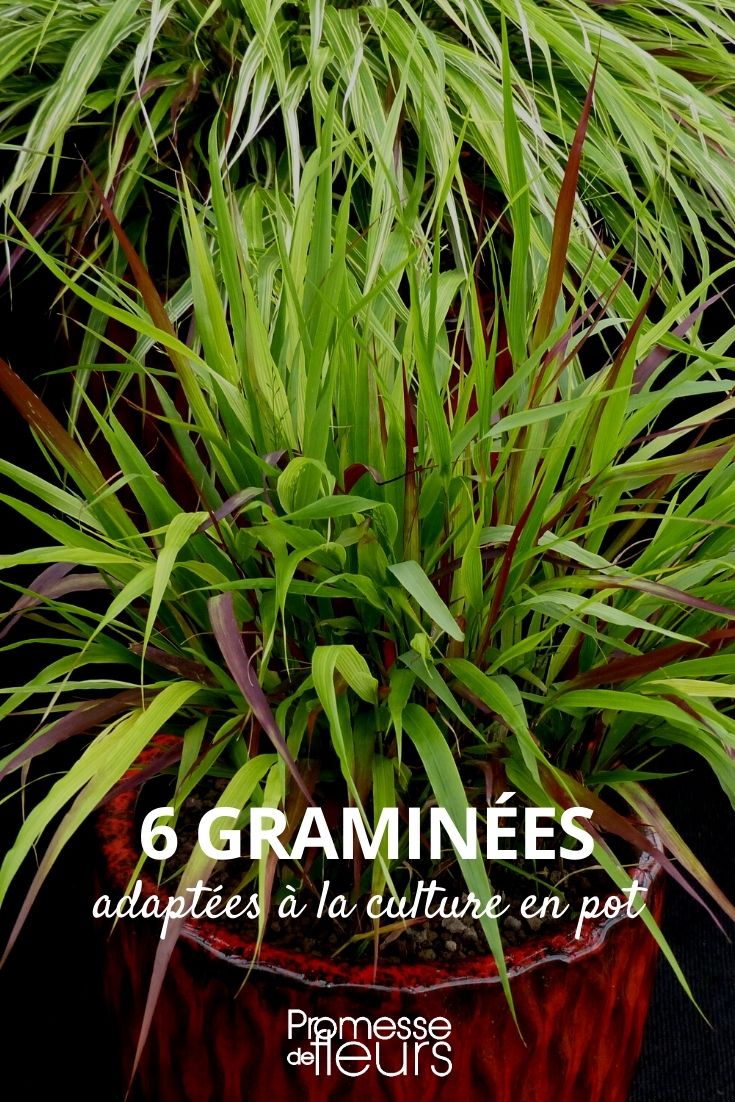































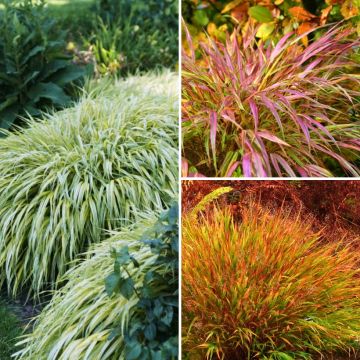
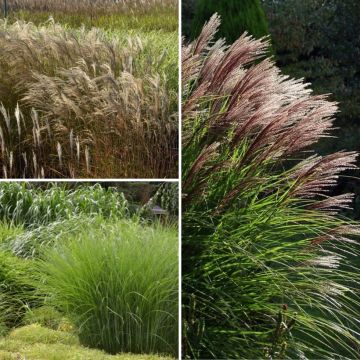
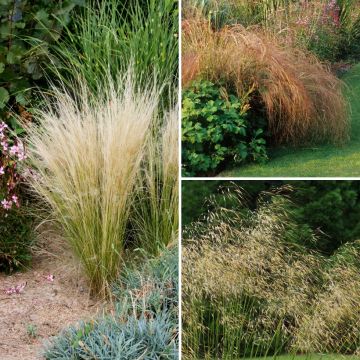
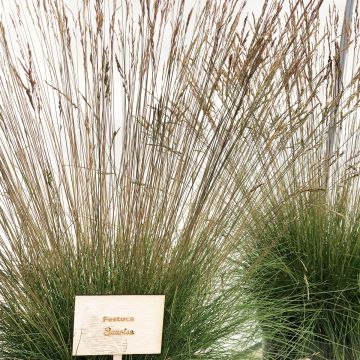
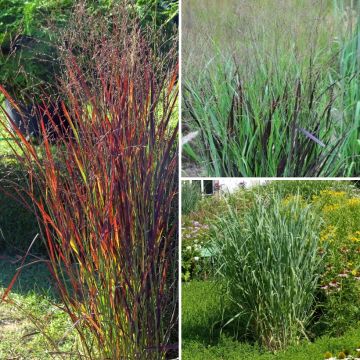
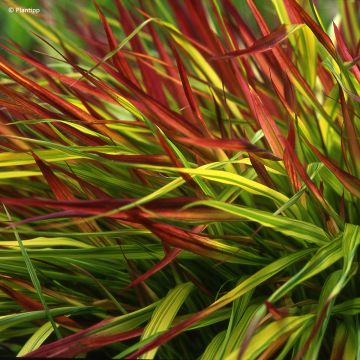
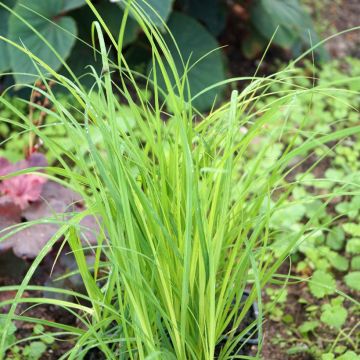
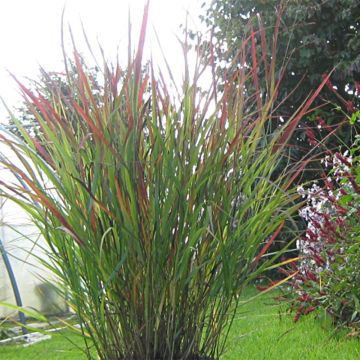
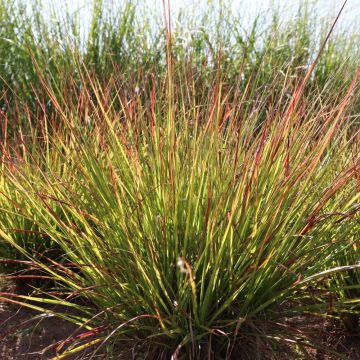
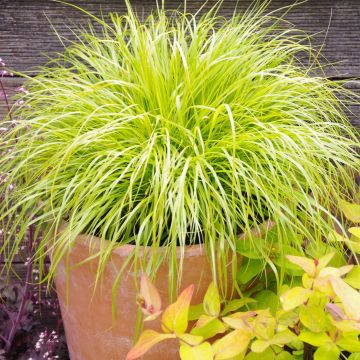
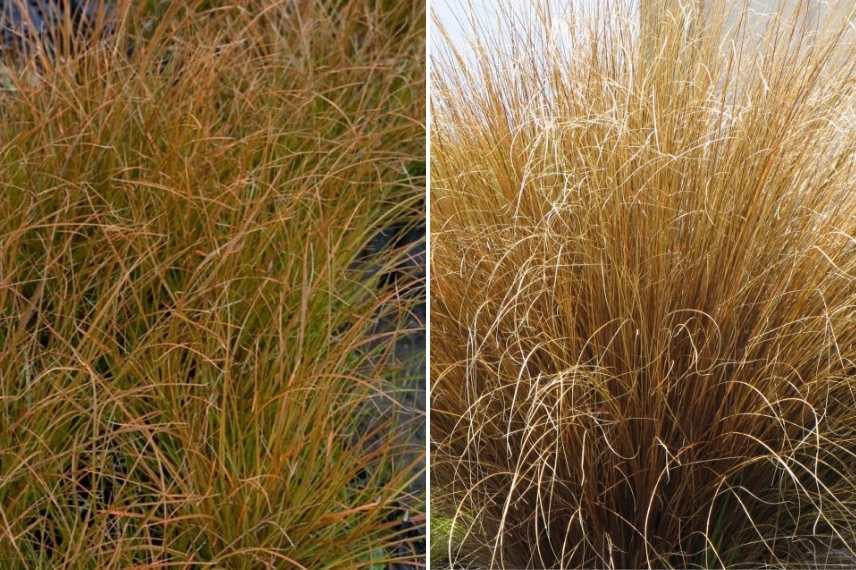
Feedbacks